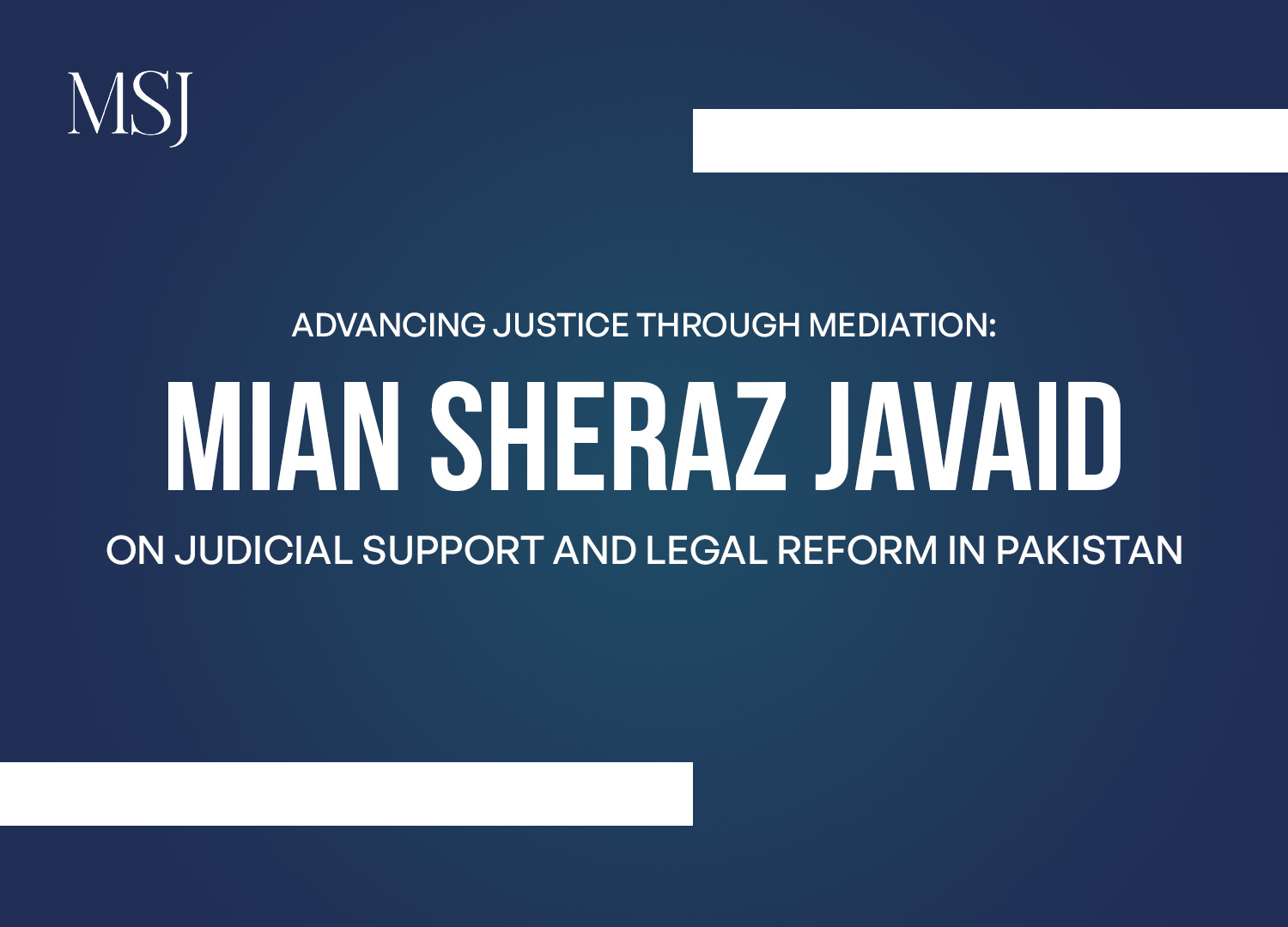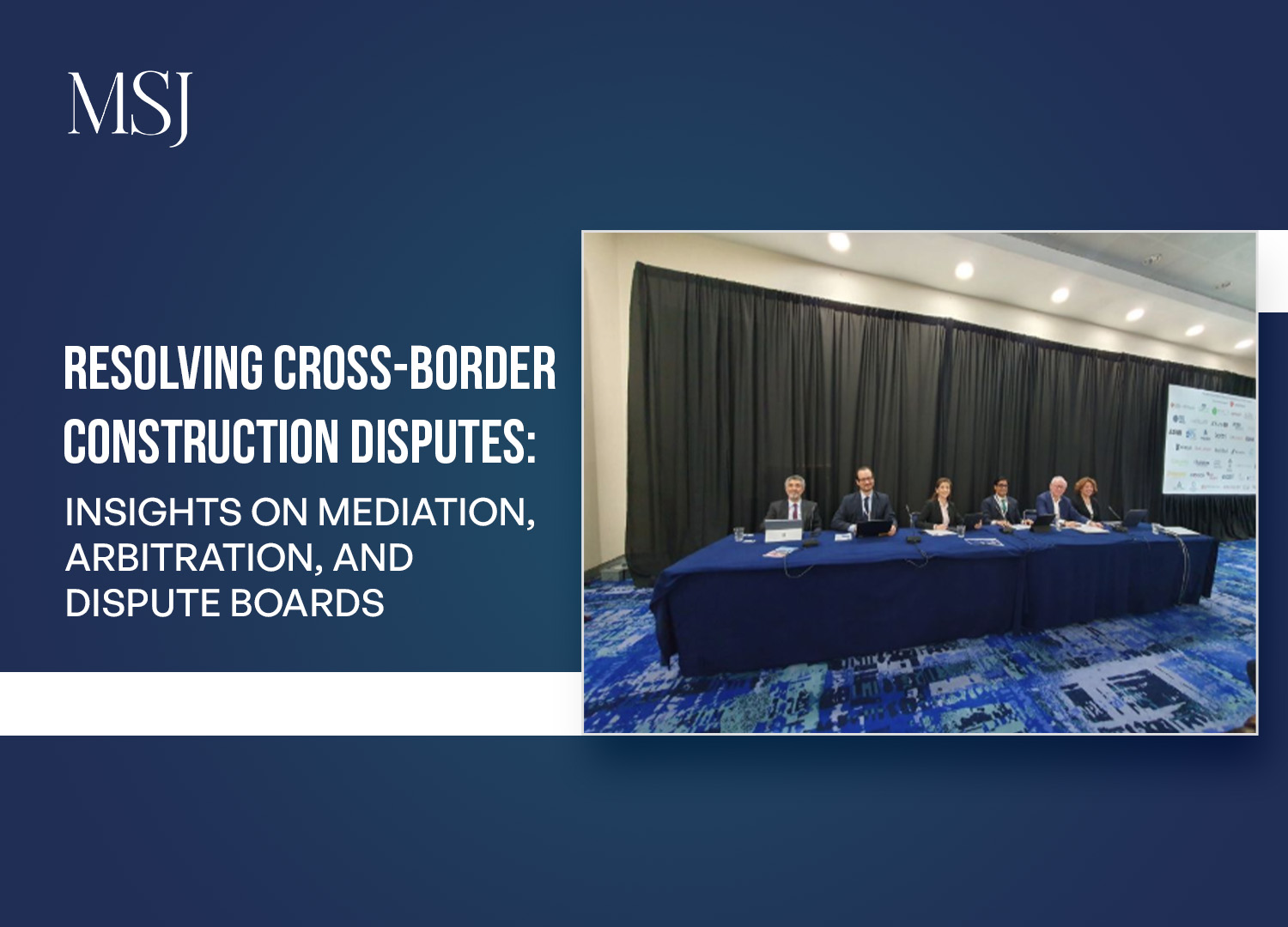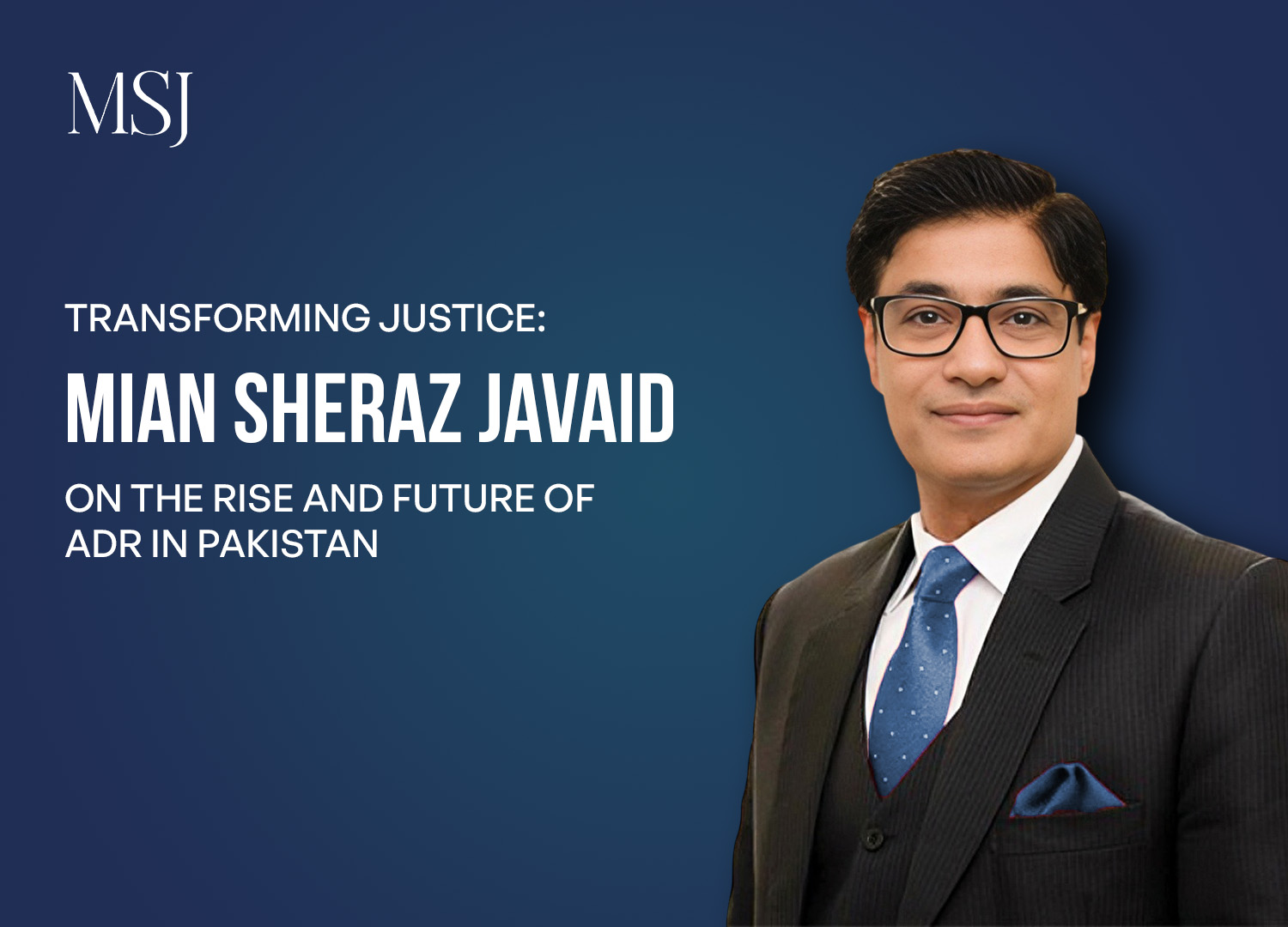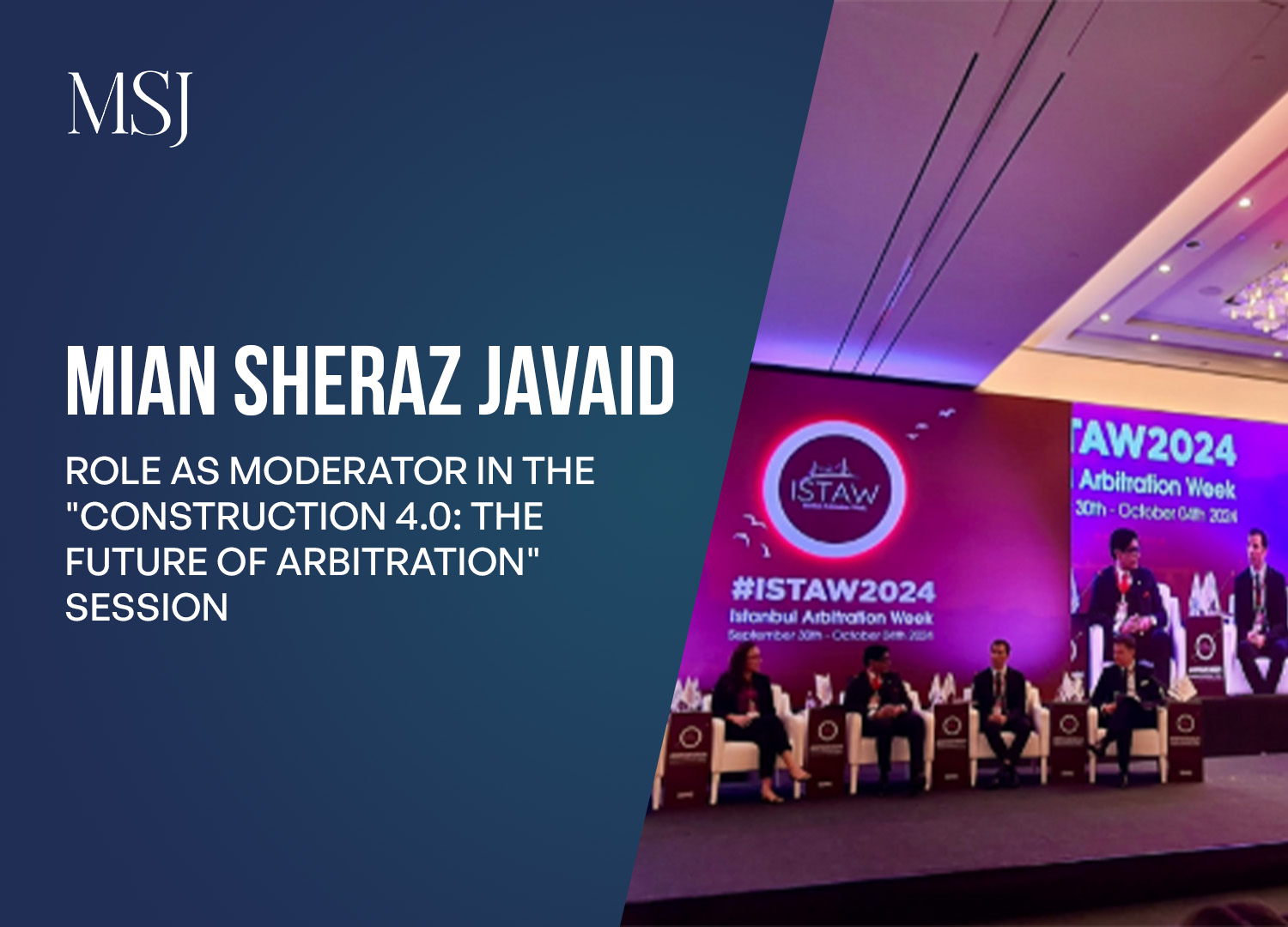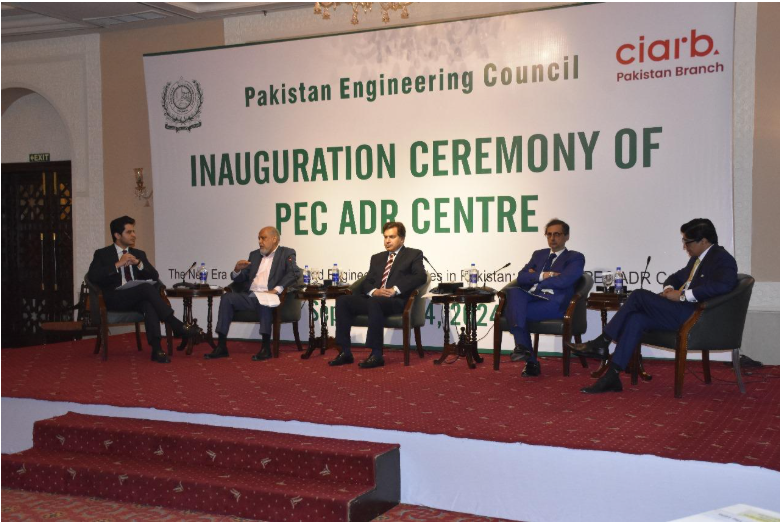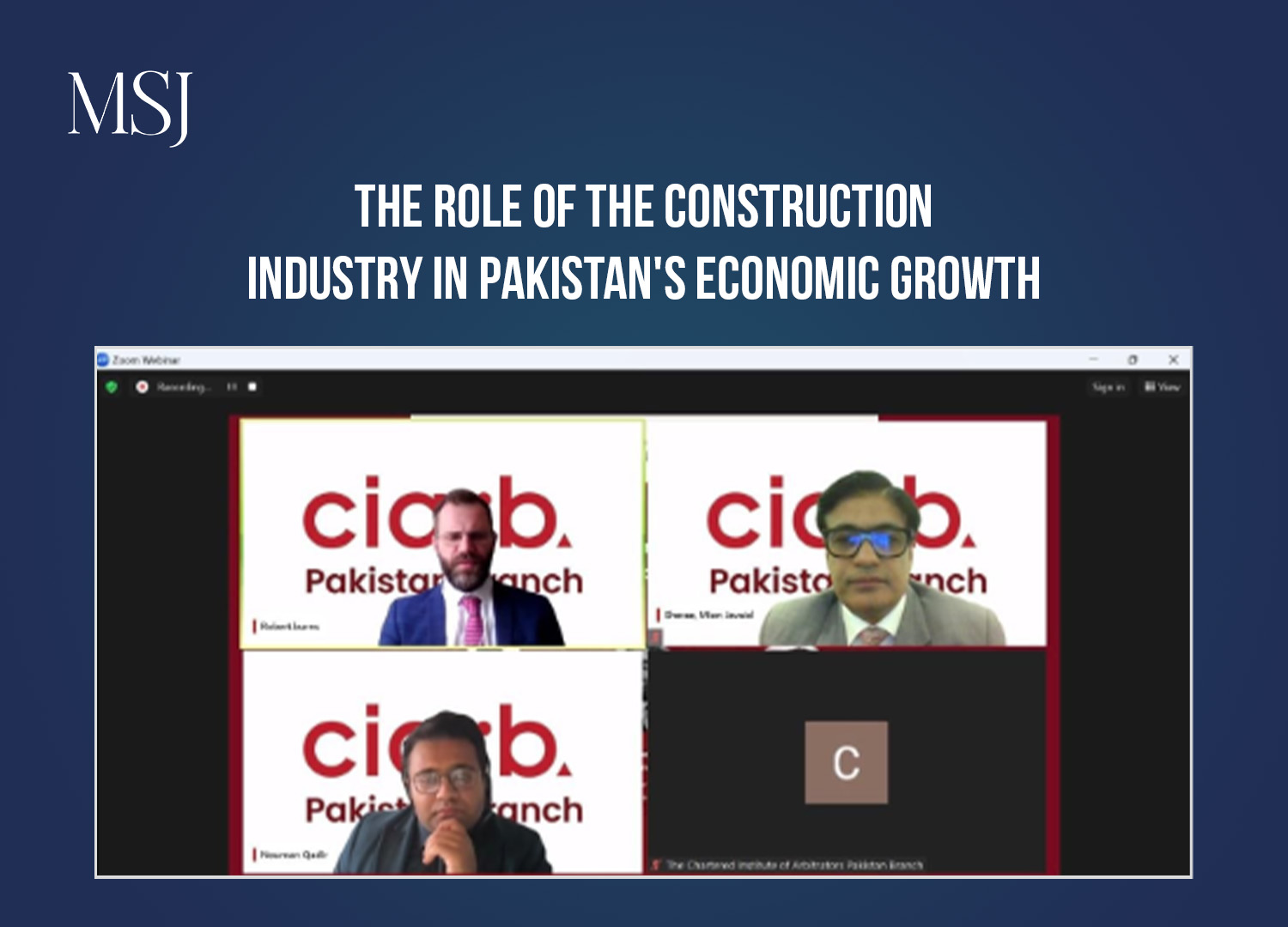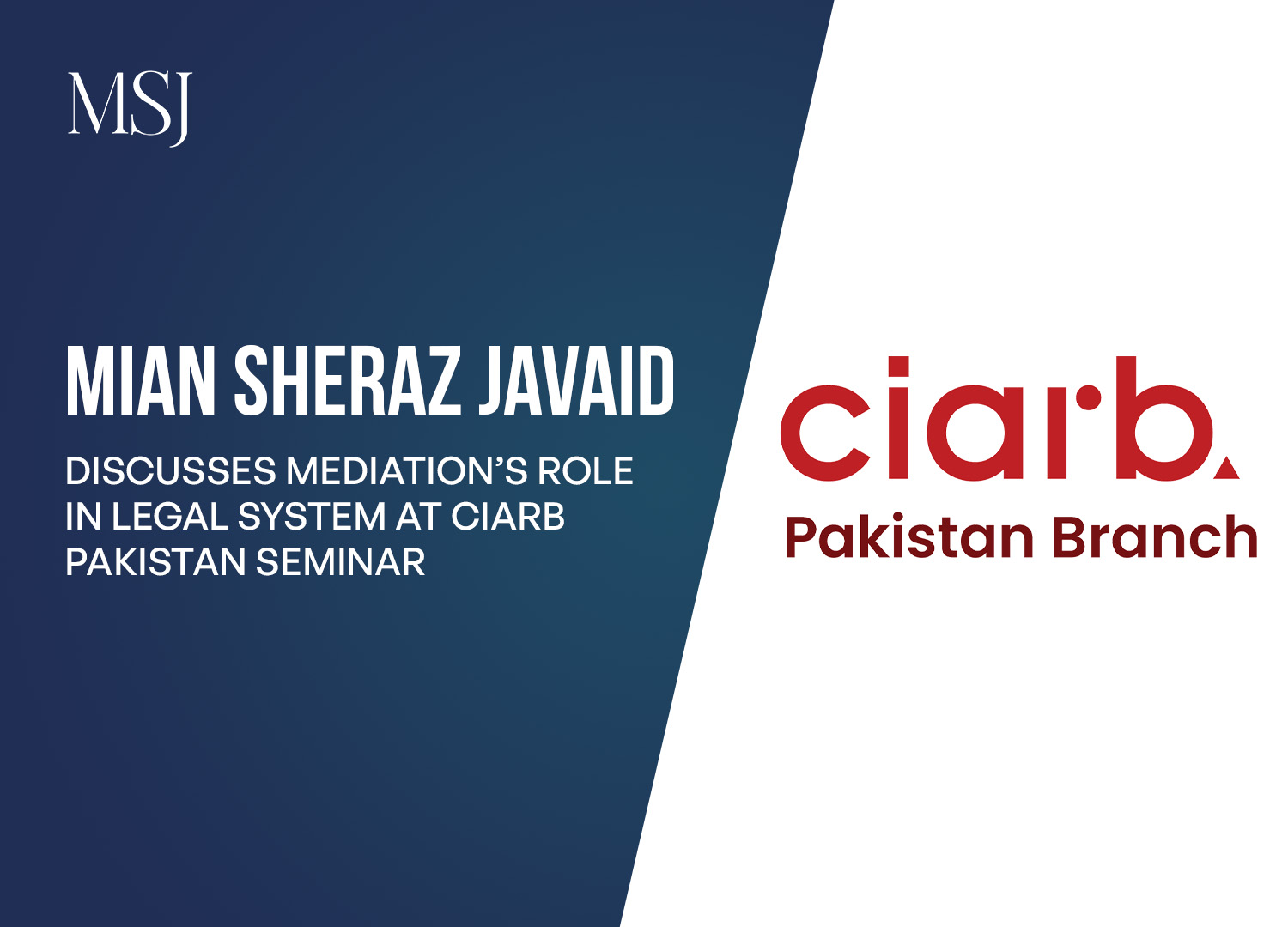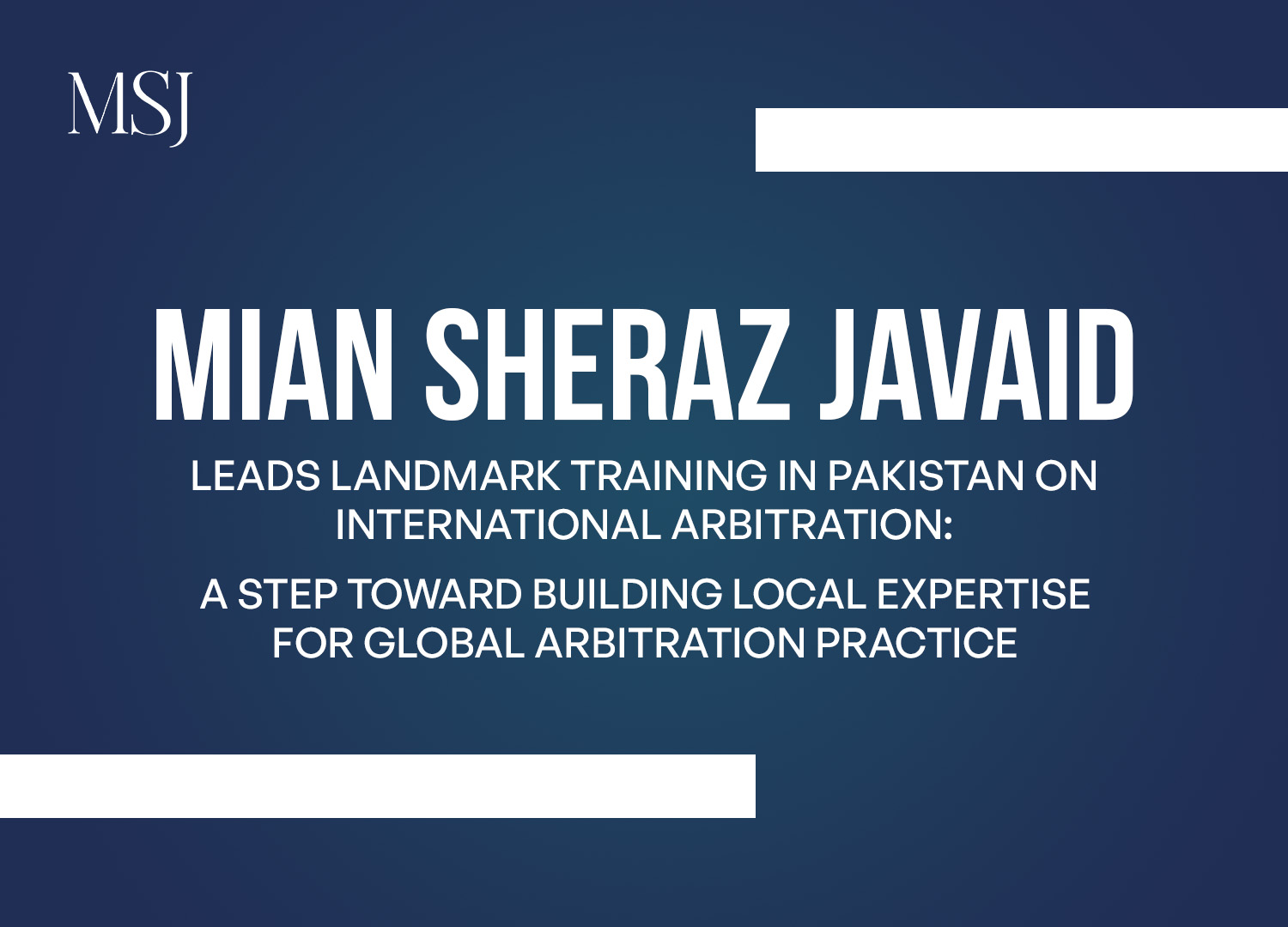Mediation in Construction Disputes: Key Insights from Singapore Convention Week
The session was moderated by Mr. Anil (安纽) CHANGAROTH, Co-Head of ESG and Construction Practices at RHTLaw Asia LLP, who expertly guided the conversation through complex issues surrounding the construction industry. He was joined by a team of esteemed panellists, including Ms. Lenny Rahman, a partner at HLR LAW, and Mian Sheraz Javaid, who represented the perspectives of different Asian nations. The session examined the challenges faced by construction professionals in Asia and how alternative dispute resolution (ADR) methods, specifically mediation, are becoming crucial in preventing costly legal battles.
Setting the Stage: The Importance of ADR in Construction
The session opened with an opening statement by Mr. Kelvin Goh, Chairman of the CPD Committee (SISV QS Division), where he stressed that ADR has become more significant in settling disputes in the construction industry. "The construction industry is highly prone to disputes, ranging from misunderstandings in contracts to project delays and payment problems. Traditional litigation often takes too much time and is expensive, thus creating an increasing interest in ADR methods, including mediation," said Mr. Goh.
This opening provided the backdrop for an engaging discussion that sought to understand the current state of the construction industry in Brunei, Pakistan, and Singapore. The panellists, including Sheraz, explored how different nations in the region are grappling with disputes in their construction sectors and how they are leveraging ADR to resolve them effectively.
The Role of Mediation and ADR in Construction Disputes
The conversation quickly turned to the role of ADR in the resolution of construction disputes. As industries continue to grow and evolve in Asia, it is increasingly clear that ADR, and specifically mediation, provides an essential alternative to litigation. “Mediation helps parties preserve business relationships, which is vital in industries like construction where ongoing partnerships and collaborations are crucial for future projects,” explained Sheraz.
Mediation, unlike litigation, is a non-adversarial process where a neutral third party helps the disputing parties come to a mutually agreeable resolution. It is seen as less confrontational and more cost-effective, making it an attractive option for construction professionals. In many cases, mediation allows parties to avoid lengthy court battles and retain control over the outcome, something that is often not possible in litigation.
During the discussion, the panellists shared examples from their respective countries, with Sheraz providing a case study from Pakistan, where mediation has increasingly been adopted as a means to resolve construction-related disputes. “In Pakistan, where the legal process can often be delayed by backlogged courts, mediation is a preferred method to settle disputes quickly and with minimal disruption,” he said. Similarly, Ms. Lenny Rahman emphasised that in Singapore, mediation has become a cornerstone for resolving construction issues before they escalate into protracted legal proceedings.
Mediation's Global Impact: The Singapore Convention on Mediation
The session highlight came when Mr. Antony Lee explained in detail the Singapore Convention on Mediation. The Singapore Convention, adopted in 2019, aimed to make international mediated settlements enforceable across borders. This convention changed the face of international dispute resolution, especially for industries such as construction, which frequently involve cross-border contracts.
“Under the Singapore Convention, parties to a mediated settlement can now ensure their agreements are legally enforceable in other signatory countries, offering a level of security that was previously unavailable,” explained Mr. Lee. This development has been seen as a major breakthrough in international trade and construction, where disputes often arise between parties from different legal jurisdictions.
Mr. Lee pointed out that, with the Convention, mediation will increasingly be recognised as a highly effective means of resolving disputes internationally. With the advent of the Convention, construction professionals now have the confidence that their mediated settlements can be enforced in several jurisdictions, thus adding greater certainty and stability to international contracts and projects.
Real-World Applications of Mediation in Construction
It further shared real-world examples of the successful implementation of mediation in the construction industry, especially to avoid lengthy litigation. Sheraz mentioned an instance from Pakistan where major project delays arose due to the dispute between the contractors. The parties instead opted for mediation to avoid lengthy litigation and reached a mutually beneficial agreement that kept the project on track.
“Mediation played a crucial role in this case. The contractor and client were able to resolve their differences and avoid the potential for a delay that would have cost both sides millions,” said Sheraz. This real-world success story highlighted how mediation can preserve professional relationships and ensure that projects continue without unnecessary delays or financial losses.
Similarly, Mr. Changaroth, the session’s moderator, pointed to examples from Singapore where mediation has been instrumental in resolving conflicts between developers and subcontractors. “Mediation provides a flexible and collaborative environment for resolving disputes, and it can lead to faster resolutions, reducing the negative impact on ongoing projects,” he stated.
The Effectiveness of Mediation Across Asia
As the session came to a close, the panelists concluded that mediation is proving highly effective across different construction markets in Asia. This trend of mediation over litigation indicates the need for more efficient, cost-effective, and amicable ways to resolve disputes. Sheraz admits that if the construction industry in Pakistan has not seen total adaptation to the use of mediation due to its widespread applicability, a definite shift is yet visible towards embracing it as a means to avoid costly and time-consuming litigation.
“Mediation is not only beneficial for resolving disputes but also for maintaining ongoing business relationships in a sector as interconnected as construction,” he added. The panel’s consensus was clear: mediation is poised to play an increasingly pivotal role in resolving construction disputes, ensuring smoother project execution, and fostering better industry practices.
In conclusion, the Singapore Convention Week 2024 presents an essential discussion of the pivotal role of mediation for construction dispute resolution. According to experts like Mian Sheraz Javaid, mediation acts not only as a cost-effective alternative but also helps preserve professional relationships and smooth operations within the construction sector of Asia. With this rising trend of ADR methods, especially mediation, being adopted within the region, it is a welcome sign concerning this area of dispute resolution across the region.


